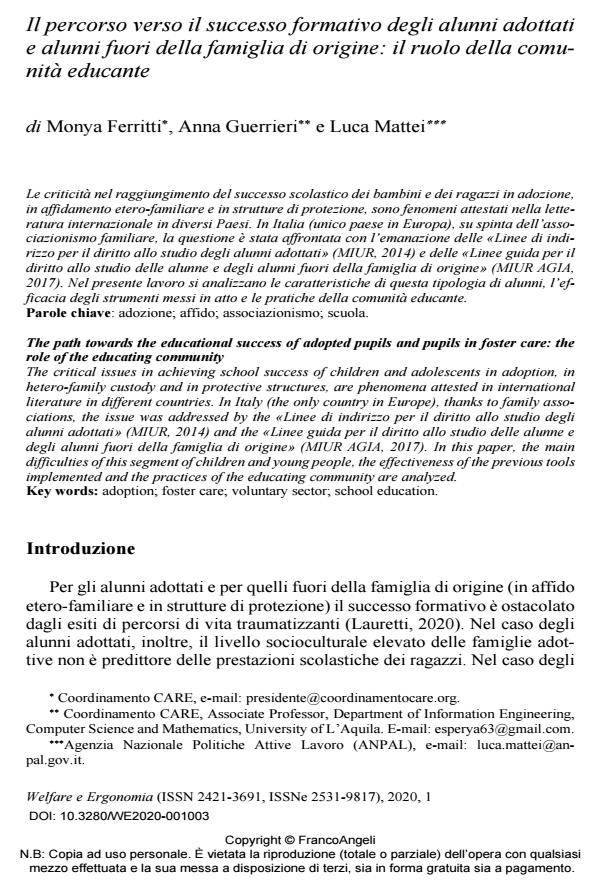The path towards the educational success of adopted pupils and pupils in foster care: the role of the educating community
Journal title WELFARE E ERGONOMIA
Author/s Monya Ferritti, Anna Guerrieri, Luca Mattei
Publishing Year 2020 Issue 2020/1
Language Italian Pages 12 P. 17-28 File size 332 KB
DOI 10.3280/WE2020-001003
DOI is like a bar code for intellectual property: to have more infomation
click here
Below, you can see the article first page
If you want to buy this article in PDF format, you can do it, following the instructions to buy download credits

FrancoAngeli is member of Publishers International Linking Association, Inc (PILA), a not-for-profit association which run the CrossRef service enabling links to and from online scholarly content.
The critical issues in achieving school success of children and adolescents in adoption, in het-ero-family custody and in protective structures, are phenomena attested in international literature in different countries. In Italy (the only country in Europe), thanks to family associations, the issue was addressed by the «Linee di indirizzo per il diritto allo studio degli alunni adottati» (MIUR, 2014) and the «Linee guida per il diritto allo studio delle alunne e degli alunni fuori della famiglia di origine» (MIUR AGIA, 2017). In this paper, the main difficulties of this segment of children and young people, the effectiveness of the previous tools imple-mented and the practices of the educating community are analyzed.
Keywords: Adoption; foster care; voluntary sector; school education.
- Un argine contro la povertà educativa: le linee di indirizzo per il diritto allo studio degli alunni adottati Monya Ferritti, Anna Grimaldi, Anna Guerrieri, in SICUREZZA E SCIENZE SOCIALI 2/2022 pp.92
DOI: 10.3280/SISS2022-002007
Monya Ferritti, Anna Guerrieri, Luca Mattei, Il percorso verso il successo formativo degli alunni adottati e alunni fuori della famiglia di origine: il ruolo della comunità educante in "WELFARE E ERGONOMIA" 1/2020, pp 17-28, DOI: 10.3280/WE2020-001003